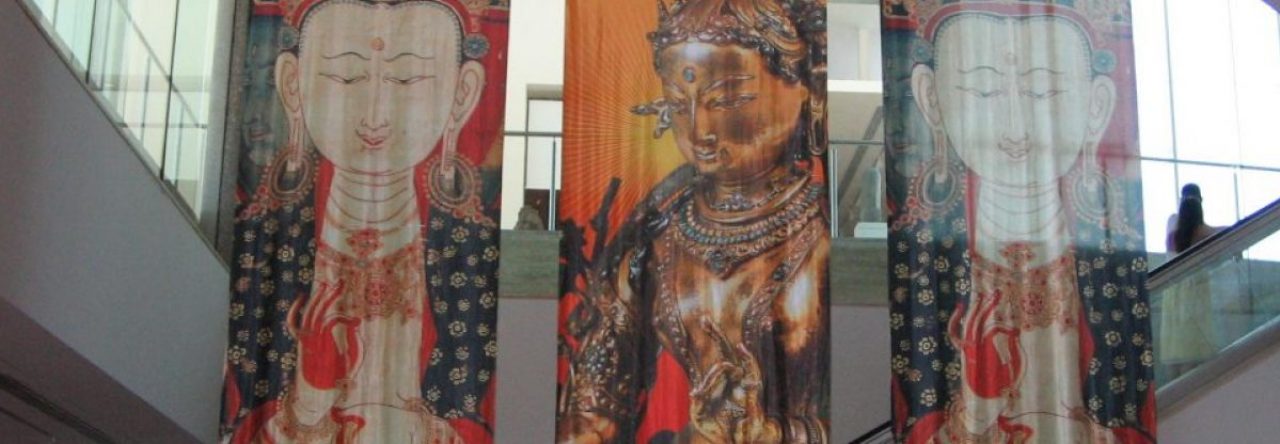KĀLAKARĀMA SUTTA
At Kālaka’s Park (AN.IV.24)
Translated from Pāli by Christopher J. Ash
At one time the flourishing one (the Buddha) was staying at Sāketa, in Kālaka’s monastery, where he addressed the mendicants:
“Practitioners!”
“Sir,” they replied.
“Practitioners, whatever there is – in the world, with its gods, it Māras and Brahmas; among the beings consisting of recluses, brahmins, gods and men – whatsoever is seen, heard, sensed, perceived, attained, sought after, and ruminated on by the mind: I know all that. I have fully comprehended all that; all that is known to a Tathāgata,** but a Tathāgata does not place himself under that knowledge.
“If I were to say: ‘Practitioners, whatsoever in the world . . . . whatsoever is seen and heard . . . . . by the mind, all that I do not know,’ It would be false of me. If I were to say: ‘I both know it and know it not,’ that, too, would be false of me. If I were to say: ‘I neither know it, nor am I ignorant of it,’ it would be a fault in me.
“Practitioners, when seeing, a Tathāgata does not imagine a seen; she does not imagine an unseen; she does not imagine a ‘possible-to-see’;*** and she does not imagine a seer.
“When hearing, she does not imagine a thing heard; she does not imagine an unheard; she does not imagine a ‘possible-to-hear’; and she does not imagine a hearer.
“When sensing, he does not imagine a thing sensed; she does not imagine an unsensed; she does not imagine a ‘possible-to-sense’; and she does not imagine one sensing.
“When perceiving, she does not imagine a thing perceived; she does not imagine an unperceived; she does not imagine a ‘possible-to-perceive’; and she does not imagine a perceiver.
“Thus, Practitioners, a Tathāgata being ‘such’ in regard to all phenomena seen, heard, sensed and known, is ‘such.’ Moreover, I say: Than one who is ‘such,’ there is none greater or more excellent.
“Whatever is seen, heard, sensed, or clung to,
is valued as ‘truth’ by other folk.
Amid those who are stuck in their views,
I hold nothing as true or false, being ‘such.’
“This snag I beheld, long before,
whereupon humankind is hooked, is impaled:
‘I know, I see. It is truly so.’
No such clinging for Tathāgatas.”
© 2021, Christopher J. Ash
Notes:
*The sutta presents two ways of speaking about ‘This’ – the big activity that this ‘whatever-it-is’ is. The two ways are the valid knowing, and the non-conceiving. I suspect this and similar passages elsewhere in the Nikāyas are what gave rise to the later ‘Two truths’ doctrine.
** It is helpful to think of Tathagāta as referring to a person who comes and goes in suchness – that is, who is not identified with anything that comes and goes; who, for that reason, can’t be found by Death.
The one for whom there is no attachment, with its net,
No craving to lead him anywhere –
By what path will you lead him,
The trackless Buddha of infinite range?
Trans by Valerie Roebuck, The Dhammapada (Penguin Classics), verse 180. Penguin Books Ltd.
*** This is literally ‘to-be-seen,’ which could refer to a future seeing. Ñāṇananda translates it as ‘a thing-worth-seeing.’ Bodhi: ‘What can be seen.’ Thanissaro: ‘to-be-seen.’ (And, likewise for the other senses, of course.) Given the context, I’ve taken it as closer to Ñāṇananda’s translation, and Bodhi’s. I suggest it represents some desire for a different kind of object, wishing for another kind of experience.
So, I suggest that the Tathagāta doesn’t conceive of objects as actual, independent, and over there; objects in any condition – an object seen, an object not seen, an object possible to see (imagined). Neither does she doesn’t conceive of a seer.
